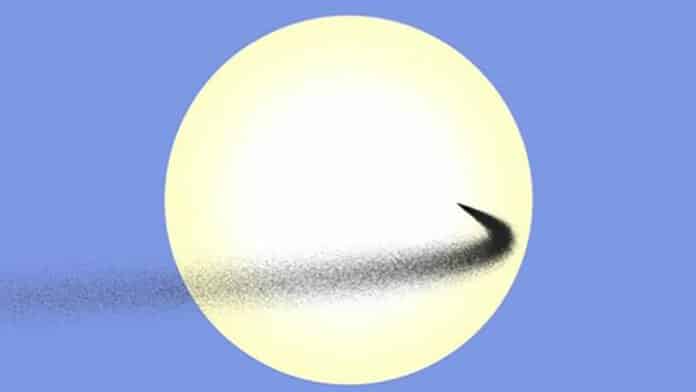Climate change on Earth is an existential threat. Increased entrapment of solar energy, the result of changes in the composition of the Earth’s atmosphere, is acknowledged to be a severe problem. One strategy for reversing this trend is to intercept a fraction of sunlight before it reaches our planet.
Space-based approaches for solar radiation management provide an alternative. Now, a new study led by scientists at the Center for Astrophysics | Harvard & Smithsonian and the University of Utah explores the potential of using dust to shield sunlight.
According to scientists, moondust, i.e., lunar dust launched from the moon, could be a low-cost and effective way to shade the Earth.
Moon dust takes almost for billion years to form. Scientists think that it could deccelerate the rise in the Earth’s temperature.
For this study, a team of astronomers used a technique- generally used to study planet formation around distant stars- to the lunar dust concept. During planet formation, astronomical dust- kicked out by the process- forms rings around host stars. These rings deflect light from the central star and then detectably re-radiate it.
Ben Bromley, professor of physics and astronomy at the University of Utah and lead author for the study, said, “That was the seed of the idea; if we took a small amount of material and put it on a special orbit between the Earth and the sun and broke it up, we could block out a lot of sunlight with a little amount of mass.”
The effectiveness of a sunshield would depend on, suggests the team, its ability to sustain an orbit that casts a shadow on Earth. The original investigation on whether orbits may maintain dust in position for long enough to produce sufficient shading was led by Sameer Khan, an undergraduate student at the University of Utah and co-author of the paper.
There were two viable scenarios. The L1 Lagrange point, the closest point between Earth and the sun where the gravitational forces are balanced, is where the authors placed a space station platform in the first scenario. The James Webb Space Telescope (JWST) is located at Lagrange point L2, on the other side of the Earth. This is because objects at Lagrange points tend to stay along a route between the two celestial bodies.
Scientists created computer simulations in which they shot dust particles from the platform to the L1 orbit, including the position of Earth, the sun, the moon, and other solar system planets. After that, they tracked where the particle scattering occured.
The team discovered that when the dust was launched precisely, it would travel in a path that placed it between Earth and the sun, thus casting a shadow over it for a while. The solar system’s solar winds, radiation, and gravity quickly blew the dust off course. The team concluded that any L1 space station platform must continuously produce fresh dust batches to launch into orbit after the first spray has dissipated.
Khan said, “It was rather difficult to get the shield to stay at L1 long enough to cast a meaningful shadow. This shouldn’t surprise, though, since L1 is an unstable equilibrium point. Even the slightest deviation in the sun-shield’s orbit can cause it to rapidly drift out of place, so our simulations had to be extremely precise.”
The second scenario includes shooting the lunar dust particles from a platform on the moon’s surface towards the sun. They found that the lunar dust has natural characteristics that make it ideal for working as a sunshield. The models examined how lunar dust dispersed along various paths before identifying optimal trajectories directed at L1 and worked well as a sunshield.
Scientists noted, “The results were welcome news because much less energy is needed to launch dust from the moon than Earth. This is important because the amount of dust required for a solar shield is large, comparable to the output of a big mining operation here on Earth.”
Study co-author Scott Kenyon of the Center for Astrophysics said, “It is astounding that the Sun, Earth, and Moon are in just the right configuration to enable this kind of climate mitigation strategy.”
Bromley said, “We aren’t experts in climate change or the rocket science needed to move mass from one place to another. We’re just exploring different kinds of dust on various orbits to see how effective this approach might be. We do not want to miss a game changer for such a critical problem.”
Journal Reference:
- Benjamin C. Bromley, Sameer H. Khan, Scott J. Kenyon. Dust as a solar shield. PLOS Climate. DOI: 10.1371/journal.pclm.0000133
